This post was originally intended for a discussion on one of the High Intensity Training forums. On this particular forum there are often discussions revolving around the idea that certain “hardcore” exercises must 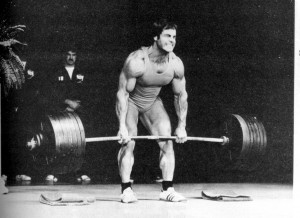 be used in order for the trainee to really gain any muscle or strength. These exercises have become sort of a rite of passage for anyone who is a serious lifter.
be used in order for the trainee to really gain any muscle or strength. These exercises have become sort of a rite of passage for anyone who is a serious lifter. 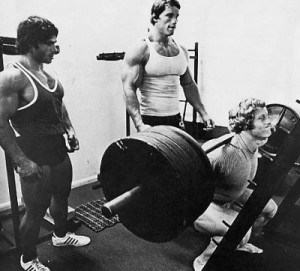 Most in the strength training world consider these movements mandatory and required in a serious strength program. There may be a number of exercises that fit this image, but the movements most commonly discussed and held in this regard are the Deadlift and the Squat.
Most in the strength training world consider these movements mandatory and required in a serious strength program. There may be a number of exercises that fit this image, but the movements most commonly discussed and held in this regard are the Deadlift and the Squat.
By the way, neither of these exercises would ever be considered in an exercise program at Overload Fitness and they certainly don’t meet the requirements for the Renaissance protocol.
While these exercises have been a mainstay in the physical culture world for many years and I do believe many people have become very strong over the years using such movements. I do not believe that these exercises are necessarily the best for developing the strength or functional-ability of the intended musculature. I simply believe that these exercises are some of the best choices when training with a barbell.
With these particular exercises I see some great potential under certain conditions, but in every case I see more risk than reward and I certainly see constraints that prohibit the Squat or the Deadlift exercises from being used for High-Intensity, single-set to failure training.
I’ll even go one step further and say that these exercises are IMPOSSIBLE to use within such an exercise paradigm because there are simply too many weak links in the chain that will fail before the prime movers ever get a deep, deserved, degree of inroad, especially in a single –set paradigm.
In the year 2011 fortunately we are not restricted to the use of the barbell and there are far better ways to attached resistance to the human body to produce the desired exercise effect without the inherent risks of barbell training.
I believe that the absolute best way to apply resistance to the human body for adaptation of the intended muscular would be with the RenEx Leg Press and the RenEx Trunk extension.
I believe that these tools not only allow for protocol of choice when working some of the biggest, densest and most powerful musculature in the human body, I also believe these machines have profound therapeutic benefits for anyone using them, whether it be the bodybuilder, the strong man, the power lifter or the senior with an osteoporotic spine.
The RenEx protocol simply allows for a greater sample of the population to obtain the profound benefits of these legendary exercises and in my opinion allow the most sustainable, practical and intense….yes, intense means of exercising in these movement patterns!
Now I realize that many long time, die hard barbell guys are crying blasphemy as we speak and I can even sympathize with those who become frustrated when I suggest that there might be a better way, but I can most assuredly say that there is currently no better way known to man to allow any person, with any biomechanical issue, of any age, with any pathology, with any bodily proportions to gain the benefits of these tried and true movement patterns.
Did I mention that the people using the RenEx machines will reap all of the benefits, and then some compared to their barbell predecessors and in less time, with less risk and these effects will be perceived immediately as we’ve shrunk the learning curve and skill set down to about nil.
I can make these statements with great certainty after seeing any number of people perform the RenEx versions. There is simply no better way of taking people where we wish to go safely. It just can’t be done.
Of course people will ask for proof of what I say and to that I really only have one sure answer. “Come to Cleveland and I will show you” and I can guarantee that by the end of the demonstration what I say will be crystal clear to anyone.
Until you make the trip let me share with you a very interesting experience on my birthday recently that might provide some “proof” for some that believe the numbers tell the whole story and that demonstration of strength is conclusive when defining exercise methods.
Before I share my birthday event I’d like to deal with one more issue as it relates to the kings of barbell exercise; the Squat and the Deadlift.
The ongoing debate amongst the barbell enthusiasts is between these two exercises…exercises that have VERY similar movement pattern:
Which is more productive?
I don’t believe we will ever have a satisfactory answer to this question at least not within the conventional exercise paradigm.
There are just too many variables:
Torso Length…
Limb Length…
Grip strength…
Back health…
Low back strength…
Hip flexibility…
Ankle flexibility…
Tolerance to load on certain parts of the body…
The other exercises in a given program…
The proximity of the most recent Squat or Deadlift workout, etc….
The list goes on and on…
The final answer becomes “it depends”….
It depends on any number of ever changing variables. But what happens when we can control more variables? What happens when we can remove the constraints to these movement patterns? What happens when we can potentate the weak links and most thoroughly involve the intended musculature in the movement pattern?
I’ll tell you what happens!
Both exercises can be used, both in the same workout, even done back to back without any of the deleterious effects and far more benefit than their archaic predecessors. You see in the RenEx program it is not only possible… it is even desirable to do the Trunk Extension and the Leg Press back to back without ANY rest….a feat that would be neither possible, nor productive when working in conventional barbell paradigms. (Stay tuned to see Dr. Doug McGuff perform this exact sequence in an upcoming blog post)
OK, back to my birthday….
I’m not sure what happens, whether it’s the male ego, a mid-life crisis or just trying to bring meaning to a day, but my birthday (November 24th) fell on Thanksgiving this year, which anyone in Cleveland, Ohio can tell you was a beautiful day, a day you just wanted to be outside doing something and this particular day turned out to be work filled.
So much so that I didn’t get to my second weekly workout in as scheduled. I arrived home somewhat conflicted because I did not do my training and I knew Overload Fitness would be jam packed the next day.
So desirous of the physical exertion and intent on doing something outside before the sun went down I went in my storage garage and drug out an apparatus to perform the heralded Deadlift exercise.
This device is called the Nautilus XPLOAD Deadlift. I was first introduced to it in a vomit inducing workout conducted by Jim Flanagan in his private workout facility on August 22, 2006 when I was 5 years younger than I turned on this day.
Back on that day in Jim’s place most would say I was at my physical peak. And I can say that I was very strong and very motivated on this day as I was performing in front of a High Intensity Training legend, I was just 3 months away from winning the Natural Mr.USA, and there were colleagues of mine in the room watching and I was expected to show what I was capable of on the “king” of the exercises.
On this day in 2006 I had no recent experience performing the deadlift exercise but I gave it my best go. Jim loaded the machine with 2 one-hundred pound plates and 2 forty five pound plates for a total added weight of 290#. He asked me to perform the exercise first in a very demanding sequence. On this day I performed 21 repetitions. I did stop shy of failure.
Fast forward to my birthday 5 years and 3 months later…on this day I decided to try to demonstrate a similar performance. The intent was simply to lift the selected weight for as many reps as I could. I decided to use a nice even round number, I selected 300#, a bit more than I used back in 2006.
 *Note in neither case did I have any practice or experience leading up to the demonstration. On my birthday I completed 42 repetitions without setting the weights completely down even once!
*Note in neither case did I have any practice or experience leading up to the demonstration. On my birthday I completed 42 repetitions without setting the weights completely down even once!
I’m not sure I’ll ever attempt such a feat again, who knows maybe it could be my birthday ritual, but I think I satisfied any curiosity I might have about the former kings of exercise. I don’t believe any amount of “other” training(other than RenEx), or practice, or even intent to just make weights move up and down could have allowed me to out do this demonstration I did on November 24th, 2011.
BUILT BY RENEX!
The Trunk Extension machine has been called the “Game Changer”.
I find this name appropriate as we rewrite the rules with this new technology. I wonder what will happen in five more years???
I’ll be sure to keep you posted.
As always feel free to leave your comments or questions below and I’d be happy to reply!
Also, stay tuned as we have some AMAZING content coming up and the release of the long awaited work by Ken Hutchins, The Renaissance of Exercise: A Vitruvian Adventure.
So if you are NOT on our email list be sure to opt in below so you don’t miss any of this AMAZING content!
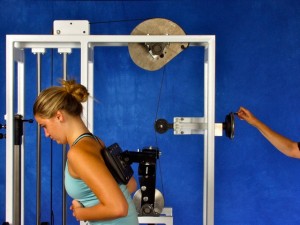

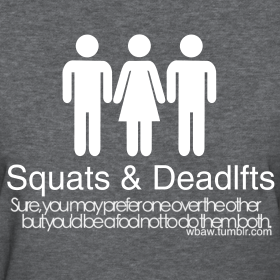
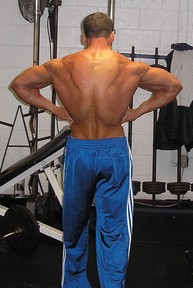
{ 34 comments… read them below or add one }
Happy Birthday and another thought provoking article…the bottom line is this if your goal is to DIRECTLY and safely inroad the target musculature, then the choice of protocol has to be and should be REN EX or as close as possible to this as you can get on your own (as many trainees like myself) and if you have access to good quality machines (as I do) then these again should form the mainstay of your workout….however if your goal is merely to demonstrate your strength in an inefficient and possibly dangerous way which in fact requires a HUGE degree of skill and practise, then such exercises as the barbell squat and deadlift tick the required boxes…an intelligent trainee, one who is not prone to tradition but seeks answers to allow his training and therefore results to be the best possible, will know which direction to take…yes its very difficult to go against the norm and even now sometimes I struggle to accept that such limited training can work, but the result is I’m by the far the biggest I’ve been training this way once or twice per week at most…and at present tip the scales @ 253lbs.
Paul.
THANKS PAUL!!
253# now? wow!
I have had to learn most of these lessons the hard way.
Joshua
Interesting and possibly very timely for me. I bought and have used a trap deadlift bar and made good progress in my weights used for most of 2010. Recently I seem to be plateauing and last workout, I actually strained my lower back. (note that previous to having a trap bar, I was never able to do bent legged deadlifts safely, I hurt myself EVERY time I tried, but ironically NEVER hurt myself doing stifff legged variety (knees unlocked))
I don’t have access to Renex machines but I do have a second generation low back and leg press. Original ss manual suggested doing these exercises back to back. Thoughts or suggestions?
YES SIR! Make good use of those machines! below you can see a basic template based on what i think you have at home, realize these are just templates….for more see the New RenEx manual, to be released just before christmas.
1)Calf Exercise
2)2nd Gen Trunk Ext
3)Leg Press
4)PullOver
5)FGPD
6)Chest Press
OR
1)Calf
2)Trunk Ext
3)Leg Press
4)OHP
5)fgpd
6)Pullover
7)chest press or push up
of course these can be built out or shrunk….prefatigue or potentiation exercises added
some might finish with biceps and triceps…..anyway, yes i really like Trunk Ext right to Leg Press.
Thanks!
Happy Birthday Josh! I have to agree with your statements regarding the squat and DL. I have long legs and it was always difficult for me to squat with good form. I decided to go to a trap bar and that resulted in a severe lower lombar sprain. I now leg press and without pain.
looking forward to RenEx Austin!
Be Well
Terry
Thanks Terry!
it’s a very small percentage of the population that are built for those movements, even in those cases there is no logevity in performing them with heavy loads.
Hi Josh
A belated happy birthday to you; you certainly know how to celebrate. This performance demonstrates the superiority of the protocol and the equipment you employ. The squat vs. deadlift debate has gone on for years, and I know Mentzer favored the deadlift as the king of barbell exercises for total mass stimulation
Your performance also demonstrates that rare combination of great muscular strength with a high degree of anaerobic muscular endurance. These are two traits which very few people possess simultaneously, and is something which Arthur Jones had written about.
When you lived in Erie, PA , there was a powerlifter named Joe Orengia who had those two traits. Joe deadlifted around 640 lbs. at around 160-165 lbs. bodyweight. He also was quite adept at doing a high number of reps with some impressive weight. I’m sure Tom Platz and Tony Fratto were able to perform in a likewise impressive manner in the squat. There are also documented reports of Bruno Sammartino, a former pro wrestler from Pittsburgh, doing 38 repetitions with 330 lbs. at the conclusion of a bench press workout in which he went over 500 lbs. The 38 reps was his tenth set.
While a lot of this is genetic (fiber recruitment and activation of fast and medium twitch fibers) , I think the RenX protocol you use does augment the predisposition you have and also tends to enhance this ability in a safe and efficient manner.
Ed H
ED,
Thanks for the birthday wishes and the references.
Your last sentence hits the nail on the head.
…to me it’s as much about longevity…optimization as opposed to maximization.
An important to point to consider, while no one is saying. me especially the squat and deadlift are not effective BARBELL exercises, IF done properly. The inherent problem with them, is in fact there execution, most don’t do them properly and thus makes them very dangerous, they are very difficult to teach which wastes valuable workouts, the list goes on. Ren Ex is a STANDARDISATION of a protocol, there is no room for interpretation, nor should there be, there is some teaching required but this more to do with making the protocol as effective and efficient as possible. thus the trainees results are that much faster..the choice is yours.
yup. We’re trying to control more variables.
Great way to celebrate your birthday Josh! One of my former patients, Bill Good (Olympic weight lifter in the 40’s) used to celebrate his birthday by lifting a 2,000 lb dumbbell via shoulder harness the number of times his birthyear. The last time he did it was when he was 75!
Wondering what your experience has been with another “sacred cow” the bench press. Many of my clients question how building strength using slow controlled movement on a machine (we use MedX) coorelates to the bench press. My experience has it doesn’t due to the fact that it is a skill and if not practicing the skill your results diminish. I am surprised that you were able to increase so dramatically with the deadlift with no practice to perfect the skill. Your thoughts on this would be appreciated.
Hi Dr.Lausch,
In most cases when I’ve been asked this question it’s been by someone who has bench pressed for many, many years. What ever they reached in capacity for this movement is pretty much what it’s ever going to be. This has to do with the in congruence of the resistance curve on this exercise and the fact that they have pretty much acquired as much skill to propel the bar as they are going to get. Of course if they get some stronger and continue work on the bench press feat I think they would have the best chances of furthered improvement in the lift in a power-lifting meet or what not…i always warn them that this can come with a price especially when the capacity to produce force is radically increased from the more technologically advanced training method.
Also note that this little birthday experiment was done on the Nautilus Deadlifting device…it requires about nil in the way of skill, no groove to stay in and can be picked up without any practice…..oh, and the fact that the line of pull is not affected by a bar across the shins hence stays closer to the center of gravity which further reduces any finesse and risk when performing such a feat.
The big Four Oh! Yup landmark, I started bodybuilding competion for the first time when I turned Fourty. I did so because after years of chasing lifts I realized it was muscle that matters. I did so even though I will never look brawny by any means, my ego left with my youth and my insecurities. While I enjoyed ever increasing numbers in bench press, squats, deads etc it was time to reprioritize. As we age ‘real’ strength and functionality become important. Remaining pain free is paramount. Like this RenX movement with time should come wisdom and a thus a rebirth of what ‘real’ progress means.
Regards,
Andrew
“with time should come wisdom and a thus a rebirth of what ‘real’ progress means”
😉 i love these little quotes, I’ve got bunches of these gems from you and Al Coleman
While the idea of removing the ‘weak link’ in the posterior chain does make sense, unfortunately, machines are not without their risk. Dr. Stuart McGill, PhD, in his first book on Low Back Disorders states ““the leg press sometimes causes the pelvis to rotate away from the back rest when the weight is lowered. The resultant lumbar flexion produces herniating conditions for the disc!” His second book also provides similar feedback on seating exercises and the potential spinal risk while demonstrating a properly performed deadlift with a neutral spine provides more optimal loads with no impact to the discs.
Parker,
We must differentiate when we say Leg Press. Of course what you quote above is true, but the 45 degree leg press in gyms is in no way related to what we are doing with the RenEx machine. Equipment design, protocol and instruction can make a movement that may have been injurious under other circumstance one of the exercises of choice for rehabilitation of the pathologies mentioned above.
first and foremost the seat must be designed in such a way where loads are transmitted over a large surface area and neither axially loading the spine nor roll the pelvis….other considerations must also be taken with regard to a proper “get- set” which is maintained at the pelvis thoughout the entire exercise performance. If this “get-set ” is adhered to when loading the machine it is virtually impossible to undo during the exercise assuming there is no unloading or firing out (of course strictly prohibited with RenEx protocol).
[note some manufactures are now making leg press seats that force the “arched spine” with the argument that it’s ‘more like a squat’. We DO NOT desire the attitude of the spine to be as it is in a barbell squat. The protocol for our Leg Press and ones of the like is biased toward posterior pelvic tilt NOT anterior…..and this ‘get-set’ is maintained through out.]
I want to make something clear when discussing lumbar, hip or pelvic pathology, not only is the RenEx Leg Press safe to use with regard to these areas, it is the very first exercise introduced to a subject who has a Herniated nucleus pulposus, SI dysfunction, Total Hip Replacement,Spondylosis,Spondylolisthesis, Degenerative Disc Disease, or spinal stenosis.
It is faulty exercise machine design and the rebounding, boucing and firing out of the congested or flexed spine positions that create context for Dr.McGill’s comments. None of which is part of RenEx
Joshua,
Thank you for the explanation, however, Dr. McGill’s concerns go beyond the quote I’ve posted and your feedback and I don’t believe Dr. McGill is necessarily referring to rebounding, bouncing or firing out of a position based on his publications. In particular, a loaded spine with machines reportedly do create forces that are damaging to the lower back due to the compression and shearing forces. Simple physics and the application of force vectors easily explain this: the resistance or weight drives the hip/pelvis back which, with the lower back in a compromised (seated) position, generates the risk for injury.
On page 36 of my copy of Ultimate Back Fitness and Performance, Dr. McGill notes “…the sitting posture required of many machines results in increased peril to the back – for example the seated press machine forces the lumbar spine into flexion with application of combined shear and compression. I have been asked to testify in two cases where therapists were being sued for malpractice by training their clients with such machines which resulted in back injury. The only time such a machine would be justified would be to train for the perverse objective of training to be the best seated leg presser!” He goes on to note on page 37 of the same back that “Any machine that requires a sitting posture” begs consideration for performance and safety. On page 118, “Callaghan and McGill (2001b) suggest that no single, ideal sitting posture exists…”
Another consideration is the “low back” or trunk machine: Dr. McGill notes these machines create compressive loads that can produce disc herniation.
While I could reference other information from Dr. McGill on core and back health, I’m definitely not qualified to speak for him. I’d offer to send your response to him as I’d be curious as to his perspective as his other writings on seated exercise address a number of considerations he could articulate better than I could.
I do know since adopting Dr. McGill’s ‘core’ training approach in his “Ultimate” back publication, my back has never felt better.
Also, please don’t take my feedback as a criticism of what Ken Hutchins or you are trying to accomplish. As some background: I bought Ken’s book approximately 20 years ago after meeting powerlifting great Ronnie Ray in our high school gym. (At the time, it was one of the best equipped gyms in the state to include college, pro sports as well as commercial.) He was performing SuperSlow bench presses with over 300lbs and when I tried to spot him, he declined the help. Following the lift, he introduced himself and explained he was using SS due to a shoulder issue to prep for a Master’s bench press competition. I did some research and also contacted Dr. Darden, as he was based locally at the time and enjoyed several conversations on the approach. I’ve since included SS training in my training, had the privilege of speaking with Ken on several occasions and found ‘cutting edge’ approaches such as Kettlebells live down to the expectations of Arthur Jones, for example, regarding ballistic training.
Best regards,
Parker
Hi Parker,
The set up and positioning on the Leg Press is neither seated, nor are there shear forces on the spine. This would have to be demonstrated.
I understand Dr.McGill’s critiques of Leg Pressing in the orthodox exercise paradigm. It’s important to see our set up and how the forces are distributed in order to have context.
Again, this is the first exercise we introduce with spinal pathology. RenEx Leg Press is one of the most useful exercises when the subject comes in locked up. In all due respect your reference is out of context.
We have used this exercise since the late 90’s and in a few 100 of thousands of cases. I’ve never seen a back injured, I’ve never seen a pre-existing condition exacerbated. I cannot say this is true in other cases including the MedX Leg Press.
Note that we are frequently training people referred specifically for spine pathology by spinal surgeons. I have tested this in the worst of the worst cases.
Joshua
Hi Joshua,
Thanks for the response…I’ve seen the video of the leg press RenEx sells; I believe Mark Alexander in Austin has a machine similar, but not exact, in design? and have used it. There is some engagement of the hips and it can be seen even in the video when force is applied.
A rule of thumb I learned long ago is simply draw a straight line from the point of force origination (feet) to the end point (hips). Basic physics states the vector sum (the line above) is the resultant force from the action that creates the forces long that specific line. Now, apply this to the biomechanics involved: the legs are being forced or driven back–the vector force line–while the spine is immobile or remains fixed. Because the resistance of the weights are pressing the legs back and the spine is fixed, the weak point in this scenario remains the lower back. So, unfortunately, it wasn’t taken out of context as the laws of physics remain constant. Simply, the angle of the force has been changed with your machine as the seated angle of standard leg presses has been reduced.
However, the trunk extension, per pgs 64, 68 and Chapter 4 of Dr. McGill’s book does create compression specific to the discs and potentially minor, but, repetitive damage to the pars, facet face and vertebral body.
There’s no ideal answer regarding the application of resistance to the human body, simply better. SuperSlow and RenEx approaches are clearly superior to ballistic or many conventional exercises, but, biomechanics of the human anatomy include multiple weak points. The risk of injury can be minimized, but, not eliminated as in the case of the spine.
Best –
McGill’ s concerns over injury potential of traditional strength training exercises on common machines have no relationship to our machines and exercise protocol. There is no common ground whatsoever between a RenEx Leg Press (exercise and machine) and ANY other leg press. The same goes for every other machine in our lineup.
Quite simply, the overall musculo-skeletal strengthening that occurs using our program literally trumps any concern over the fact that our subjects are in a “seated position”. It may be true (in general) that sitting implies spinal risk upon loading, but in our machines and with our system, more strength and muscle is built which then overrides the risk-potential of being seated. It really is that simple.
Josh’s descriptions of the specifics of our seats and bio-mechanics are icing on the cake.
I agree with some of what McGill says and you wouldnt catch me dead on any conventional equipment. For me, it’s RenEx or my own body.
gus
gus
Hi Gus,
As I mentioned to Joshua, it is simply the laws of physics. While I agree there are more optimal ways of reducing the risk of an injury (which your machines may provide), the laws of force simply cannot be changed.
I agree, conventional machines, some of the old Nautilus machines and many others are an injury waiting to happen. Hence my decision to focus on exercises that eliminates the risks those machines created.
But, risk potential (good term) is inherit in resistance training and RenEx machines may have optimized the reduction of that risk in some exercises, with others–eg Trunk Extension–the potential is still there.
Parker,
Thanks for dropping by. McGill has put out some interesting stuff, and he IS appplying the laws of physics properly, but he is missing a few of the vectors when using some examples of Trunk Extension. If one were to take an externally unloaded trunk extension, a trunk extension loaded through the shoulders (ie; Good mornings), or a ventrally loaded trunk extension(ie; deadlifts), the force vectors involved do indeed create injurious compressive loads due to lack of directness of the resistance source. A PROPERLY designed Trunk Extension places the load in a position that will change the force vectors AND create an ideal loading pattern of the paraspinal musculature.
With regards to Leg Press, your argument is correct IF the force vectors traveled higher up the hip close to the lower back. For one in our leg press we are NOT seated and secondly the force vectors go through lower through the hip and closer to the femur thus NOT involving the back. I wish I could find it now, but I remember watching a video of Mark Rippetoe teaching a squat that illustrated what we are explaining.
In summination, this argument could continue, but without us being face to face it really isn’t possible to SHOW you what we are describing.
Regards,
Al
Al,
Thanks, not arguing but trying to understand a bit better and share some other considerations your team might appreciate.
On the Trunk Extension: McGill’s second book demonstrates a Trunk Extension machine that is designed with the same movement arm as your machine. Later in the same publication, he provides research which shows the deadlift to be a safer lift for the lower back than the Trunk Extension, Dive Bomber, etc.
Re leg presses: again, the laws of physics still apply along with biomechanics. If I could “White Board” this, it would probably make more sense, but that “point” where the force vector is directed is still there and the lower back is still the weak link.
When visiting, I’d look forward to a workout, a White Board discussion and maybe a beer afterwards!
Parker,
I appreciate your digging into this, but I’ll have to politely disagree.
I find much of Dr.McGill’s writings interesting, but there is a big problem with his conclusions.
First, there is a ton of evidence against the bio-mechanical model of back pain. Second, all of Dr.McGill’s research are surrogate studies with little to no meaningful outcome studies.
I understand the biomechanics he presents, but that doesn’t tell the whole story and levers do change force vectors and muscular activation.
We have seen incredible things happen with our tools in the back pain department (as I’m sure Dr.McGill and yourself have) and we are just going to have to agree to disagree here.
Regards,
Al
You mind providing an example of the “profound therapeutic benefits “? Do you mean you’d be very relaxed and tranquil after the training as a result of extreme fatigue?
Tiffanie,
That is a likely response too, but in this case I was referring to relief from musculoskeletal pains…for example; reduction and/or elimination of muscle spasm, reduction of non-descript muscle aches and pains, cessation of radiculopathy , increased- pain free- joint range of motion, decreased tension from posture related issues.
Joshua
Above these comments the Vintage Nautilus Equipment Subprotocols book is mentioned. Is this a book you have for sale or something we can download or what. I would love to see it!
Scott Springston
Free Download
It’s A Free Download
Parker,
I’ve only seen restoration not degeneration.
I think in the very near future we’ll see tensegrity models trumping isolated biomechanical ones.
Be careful when blending paradigms, especially ones unexplored.
btw what Mark Alexander is doing in Austin is unrelated to us. If you give me 5minutes in front of the machine i’ll show you.
Joshua
Joshua,
You’re in the Cleveland area? Will take you up on that next time I’m in town.
However–I know, here we go again :o) — I would be careful in the use of “restoration” as you’re working around or avoiding the cause of an injury. Exercise is a double edged sword..while the body’s built for movement and thrives on proper resistance training, our joints do have a limited lifespan.
While I don’t think you’re implying restoration as “curing”, there is an individual who claims pushups have “cured” degenerative shoulders and cites Jack King, the individual author Bill Starr noted as winning physique contests with pushups. What was left unsaid? When Mr. King attempted to perform a bench press a few years ago, he wrote he shoulders hurt so bad he couldn’t train for several days.
Hence, I want to make sure we’re saying the same thing regarding working around or applying proper strength principles vs. the pushup example?
Also, it isn’t blending paradigms, moreso, it is the simply laws of physics. They’re universal…simply revisit Newton’s Laws as they apply to force and force vectors, then, revisit how that would apply to the biomechanics in this example.
The Trunk Extension, however, is fairly consistent regarding the potential risks created. Dive Bombers or Hindu Pushups, as I understand, were finally eliminated from many US military organizations as part of their PT programs for the very reason cited with the Trunk Extension: lower back injuries due to the pars, facet face, etc., all suffering repetitive yet consistent damage.
Any recommendations (I’m assuming they will be in upcoming book) for making the 2nd generation Nautilus (seated) leg press as effective and as safe as possible. I’m thinking that not sitting too close to the machine, and also rather than “barely touch, barely start” to go with just short of letting the weight stack hit bottom, so as not to have any unloading…. thoughts
Parker,
You are more than welcome to come into to Cleveland and show me how the laws of physics apply.
I’m going to be very blunt, you should get some experience in what we’re doing before you blindly apply information from another paradigm.
The numbers don’t lie. I’ve treated injury for the last 14 years. I’m not aware of another person who has dealt with more low back pathology.
The direction and distribution of forces toward the spine, pelvic attitude,Range of Motion, and acceleration as well and synergy amongst the body parts from head to toe are all controlled.
McGill is often referenced in physical therapy practice, i find the vast majority of physical therapy practice next to useless.
Joshua